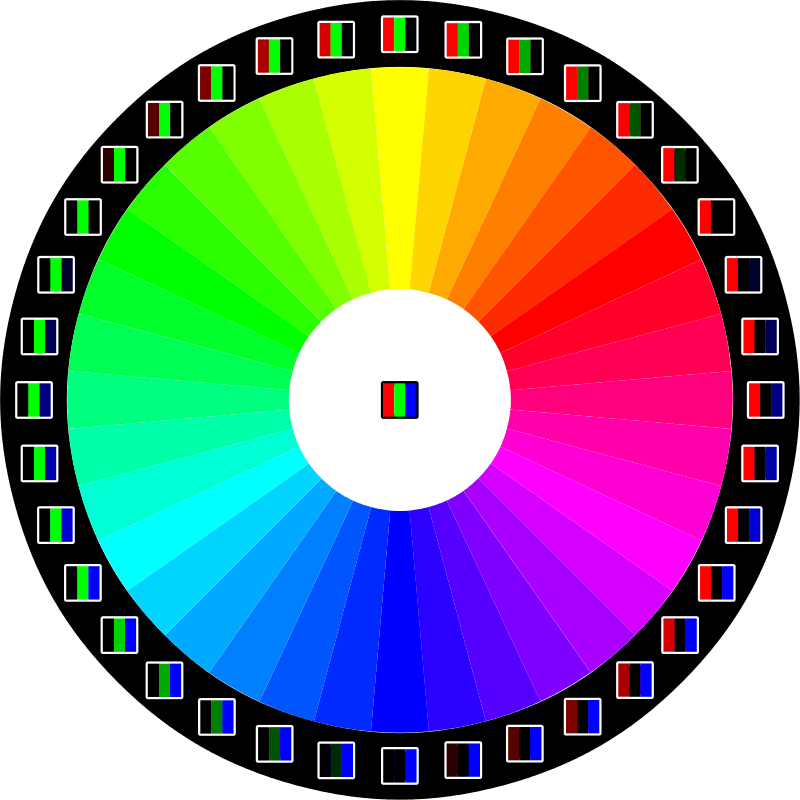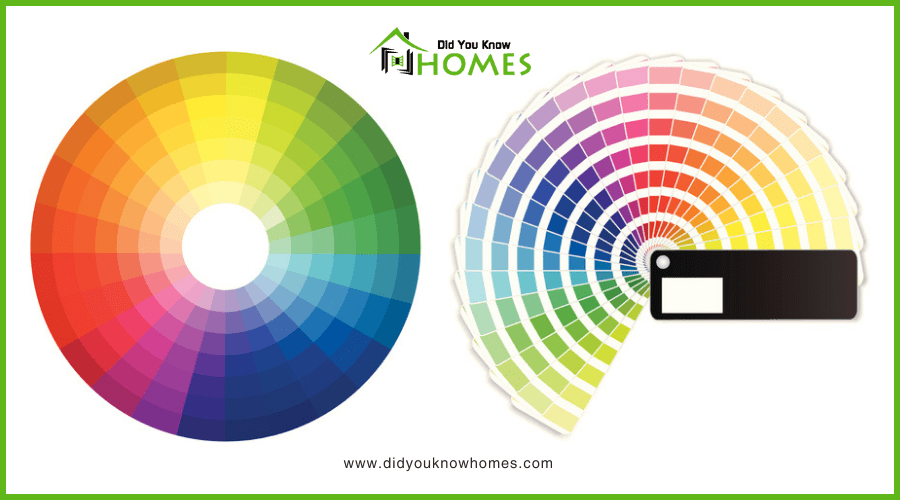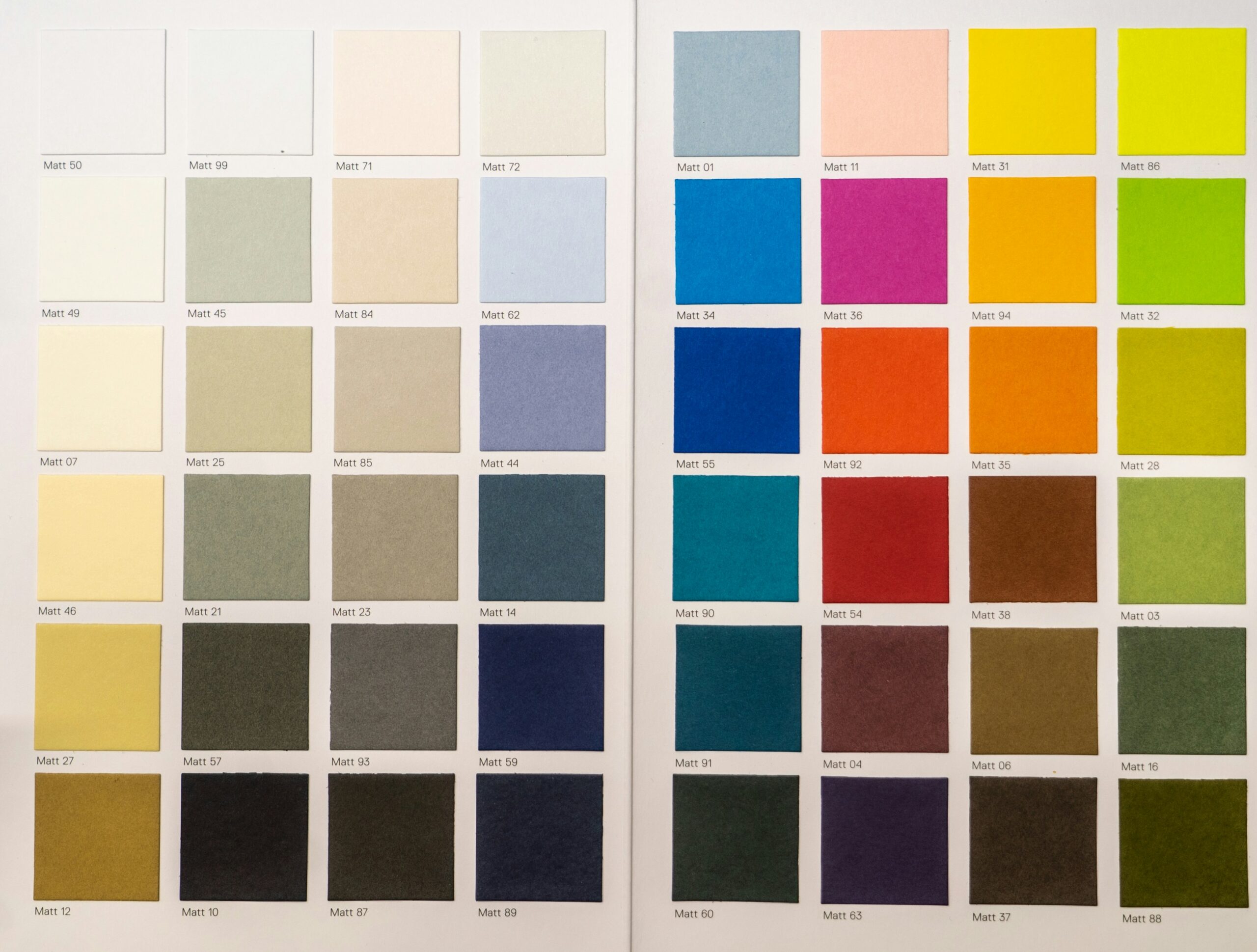You’re tired of guesswork in finding the perfect paint match, right? Immerse yourself in the future with tools like Color Muse and apps that transform your smartphone into a color matching expert. These gadgets scan colors from any surface, translating them into digital RGB values with unparalleled precision. With apps ranking matches and saving your favorites, creating custom palettes for your projects becomes a breeze. Whether it’s an old paint you’re trying to match or exploring new shades, these tools have got your back. And with constant technological advancements, you’re only scratching the surface of what’s possible in color matching. Stick around to discover more secrets.
Key Takeaways
- Tools like Color Muse and Palette Pico utilize advanced sensors to precisely match paint colors by translating real-world colors into digital values.
- The use of RGB systems and Delta E measurements ensures high accuracy in color matching, making it easier to find the perfect paint match.
- Apps such as Color Muse’s companion app enhance user experience with intuitive interfaces, making color matching and selection more accessible to DIYers and professionals.
- Saved color palettes and extensive color libraries from various paint manufacturers allow for easy project planning and color reference in future projects.
- Future color matching technology will incorporate AI and machine learning for even more precise matches, taking into account factors like lighting and surface texture.
Evolution of Color Matching
The evolution of color matching has transformed how we find and replicate colors, starting with Behr’s groundbreaking computer color matching in 1988. This leap forward enabled the paint industry to match colors with unprecedented accuracy, setting a new standard. Now, you’ve got tools like the Nix Mini and Color Muse at your disposal, turning what used to be a complex task into something you can do with a simple click. These color sensors are your best friends when you’re aiming for that perfect match.
Thanks to the RGB system, which translates color wavelengths into digital values, color matching has become more precise than ever. You’re no longer guessing; you’re calculating. This system guarantees that the color you pick is the color you get, down to the last detail. And when it comes to precision, Delta E is your go-to measurement. It tells you exactly how close your matched color is to your original, ensuring you’re spot on every time.
For DIYers, gadgets like Palette Pico have made painting a breeze. Suddenly, matching that obscure shade on your favorite pillow or an inspirational photo is not just possible; it’s easy. This evolution has not just changed the game; it’s revolutionized it, making perfect color matching accessible to everyone.
How Color Sensors Work
Understanding how color sensors like Nix Mini and Color Muse work sheds light on their ability to achieve such precise color matching. These ingenious devices measure colors by capturing reflected light, a fundamental step in the color matching process. Once they’ve gathered this light, they translate the color wavelengths into digital RGB values. This conversion is critical because RGB, which stands for red, green, and blue, is the cornerstone of digital color representation.
However, translating real-world colors into RGB can be tricky. That’s where Delta E comes into play. It’s a metric used to measure the accuracy of color matches, essentially quantifying the difference between two colors. This ensures that the color sensors don’t just give you a close match; they aim for an exact match.
Companion apps, like the one used by Color Muse, utilize Delta E to categorize matches as Excellent, Great, or Good. This ranking system helps you understand the precision of the color match at a glance. In sum, color sensors like Nix Mini and Color Muse revolutionize color matching by efficiently combining reflected light capture with sophisticated algorithms to provide you with the perfect paint match.
Top Paint Matching Tools
Exploring the top paint matching tools, you’ll find Color Muse stands out for its precision and user-friendly features. This device, coupled with the Color Muse app, offers an unmatched ability to match paint colors accurately. Imagine matching a 30-year-old paint color to a contemporary one with ease; that’s the level of accuracy we’re talking about. Available for both Apple and Android users, it guarantees that almost anyone with a smartphone can access its capabilities.
However, it’s important to mention that while Color Muse boasts a wide-ranging database, it might not cover all paint brands. Before you delve into using it, make sure it aligns with your preferred paint selections. This minor note aside, the tool’s established presence since its feature in a 2020 article by award-winning writer Katie Dohman speaks volumes about its reliability and effectiveness in the paint matching arena.
In a world where your phone cameras become tools for home improvement, Color Muse stands as a testament to how technology is revolutionizing the way we match paint colors. It’s not just about color detection; it’s about making sure every corner of your space reflects your desired ambiance with the perfect paint match.
Understanding Color Models
You’ve seen how technology can match your paint colors, but to really nail it, you need to understand color models. Knowing the difference between RGB and CMYK, for instance, guarantees your digital designs translate perfectly to print. Additionally, getting calibration right means colors look consistent, no matter the device or medium.

Color Models Explained
To accurately match colors in digital painting, understanding how color models like RGB, CMYK, and CIELAB work is essential. These models are the backbone of painting technology, ensuring your artwork appears just as you intend across various mediums.
- RGB (Red, Green, Blue): This model is your go-to for anything that glows – think screens and digital media. It mixes light to create colors.
- CMYK (Cyan, Magenta, Yellow, Black): Essential for printing, CMYK combines these colors to produce a wide range of hues on paper.
- CIELAB: When color matching needs to be spot-on, CIELAB comes into play. It’s designed for accuracy by mimicking how humans perceive colors.
Grasping these models elevates your ability to achieve precise results in your digital and printed artwork.
RGB Vs. CMYK
Delving into the realm of color models, it is crucial to grasp how RGB and CMYK vary and why they are important for your projects. RGB represents Red, Green, Blue. It is an additive color model utilized on digital displays. By blending these colors in different intensities, you achieve a broad spectrum right on your screen. CMYK, which represents Cyan, Magenta, Yellow, and Key (Black), operates on a subtractive color model. This approach is crucial for printing, where colors are produced by subtracting light from white light reflected off the material.
Understanding the difference ensures you’re not left puzzled over why colors appear differently on screen compared to print. Mastering RGB and CMYK is your initial step towards excelling in color reproduction, whether it’s for a digital masterpiece or a printed brochure.
Importance of Calibration
Understanding the importance of calibration in color matching can greatly enhance the accuracy of your projects. When you adjust your color sensors properly, you’re guaranteeing that the colors you match are as precise as possible. This process is essential for translating and interpreting color data accurately, which directly impacts the precision of your color matching.
Here’s why calibration is key:
- Accuracy: Calibration aligns your color sensors with standard color models like RGB, CMYK, and Pantone, improving the accuracy of color readings.
- Precision: It allows for consistent color reproduction, minimizing deviations across different surfaces.
- Consistency: Proper calibration ensures that the limitations and advantages of different color models are adequately accounted for, maintaining consistency in color interpretation.
Navigating App Features
When you’re exploring color matching apps, you’ll want to check out how accurately they detect colors, how easy the interface is to navigate, and if you can save your favorite palettes. These features can make or break your experience, ensuring you get a precise match and use the app without hassle. Let’s take a closer look at what sets the best apps apart in these areas.
Color Detection Precision
You’ll find that color sensors like Nix Mini and apps such as Color Muse revolutionize how we achieve precise color matching by measuring color wavelengths and translating them into digital values. Here’s what sets them apart:
- Nix Mini Color, Color Muse, and Palette Pico use advanced technology to detect color with astonishing accuracy, providing you with the perfect paint match every time.
- They measure color using RGB values and utilize Delta E to quantify the difference between colors, guaranteeing you get the closest match possible.
- With categories like Excellent Match, Great Match, and Good Match, tools like Color Muse make it effortless to understand the level of match, taking the guesswork out of your color selection process.
These innovations guarantee you’re not just close but spot on in your color matching endeavors.
Interface User Friendliness
Exploring the features of color matching apps like Color Muse and the Home Depot Project Color App becomes a breeze with their user-friendly interfaces. These tools are designed with you in mind, making color matching and seamless color selection straightforward. With the Benjamin Moore Color Portfolio and Sherwin-Williams ColorSnap Match App, you’ll find intuitive features that guide you effortlessly through the process of finding the perfect paint shade. The interface of each app prioritizes user friendliness, ensuring you won’t get lost in complicated menus. And for desktop users, the Pantone Color Match Card offers a simple platform that keeps color matching capabilities at your fingertips. Delve into these apps and experience how their interfaces make color selection not just easy, but enjoyable.
Palette Saving Options
Harnessing the power of Color Muse, you can effortlessly scan and save your favorite paint colors for future projects. With palette saving options at your fingertips, Color Muse revolutionizes how you store inspiration and conceptualize designs.
Here’s how you can maximize Color Muse’s capabilities:
- Scan Any Color: Capture colors from any surface and match them to the nearest paint color.
- Create Custom Palettes: Combine your saved colors into unique color palettes for seamless project planning.
- Access Extensive Libraries: Browse and save color options from various paint manufacturers’ full-color libraries.
Testing and Reviews
When testing Color Muse, it quickly became clear that its precision in matching a 30-year-old paint color demonstrates its unparalleled accuracy. You’ll find that the app’s ability to scan and match colors against its extensive database makes it a go-to for anyone looking to replicate an existing paint hue. Whether you’re touching up a wall or seeking inspiration for a new project, Color Muse streamlines the process. Its compatibility with both Apple and Android devices guarantees you’ve got this handy tool right at your fingertips, regardless of your smartphone choice.
Award-winning freelance writer Katie Dohman’s review further solidifies Color Muse’s reputation. She praises its effectiveness in finding the perfect paint match, highlighting how this gadget turns a potentially challenging task into a breeze. However, it’s worth noting that while the app’s database is broad, it might not cover every paint brand out there. Before diving in, check if your preferred brand is supported to avoid any hitches.
Compact and Bluetooth-enabled, Color Muse isn’t just about the tech; it’s about making your life easier. Its size means you can take it anywhere, ready to capture and match colors on the go.
Common Challenges
While Color Muse and similar tools offer solutions for paint matching, accurately replicating old paint colors presents its own set of challenges. The battle to match colors is real, and here’s why:
- Light’s Effect: Paint colors morph over time due to natural light exposure. What was once a vibrant shade can turn muted, making the endeavor to match colors a tricky pursuit. Your once perfect wall can become a patchwork of attempts without the right approach.
- Digital Limitations: Although tools like Nix Mini and Palette Pico boast precision, translating real-world colors to digital RGB values often falls short. This gap can lead to mismatches, especially with branded paint that doesn’t quite align with the digital spectrum.
- Accuracy in Matching: Delta E helps gauge the accuracy of color matches, but even with categories like Excellent Match or Great Match, replicating the exact shade can be elusive. Companion apps aim for precision, yet achieving a seamless match is a nuanced art.
In a nutshell, while technology has come far in aiding the matching paint process, light, digital translation, and accuracy still throw curves in the journey to a perfect match.
Future of Color Technology
As we look toward the horizon, advancements in color technology are set to revolutionize the way we match and apply paint, offering unprecedented precision and ease. The heart of this revolution lies in the integration of AI and machine learning with spectrophotometers and color sensors, tools already critical for precise color matching. But you haven’t seen anything yet.
Imagine smart devices in your hand that not only scan a color with accuracy but also predict the best matching paint, taking into account the lighting and surface texture. These aren’t distant dreams. With AI, machine learning algorithms will push the boundaries, minimizing errors and enhancing the accuracy of color matching like never before.
Moreover, future developments promise a seamless user experience. You’ll have real-time color analysis, custom color recommendations, and an effortless integration with painting apps right at your fingertips. This means less guesswork and more efficiency for both painters and DIY enthusiasts.
The future of color technology in painting is about simplifying the color selection process, making it faster, more accurate, and incredibly user-friendly. Get ready for a painting experience that’s not just about the perfect color match but also about the journey getting there.
Frequently Asked Questions
Is There an App for Paint Color Matching?
Yes, there are apps like Color Muse and The Home Depot Project Color App that help you match paint colors, tackle DIY challenges, and find historical hues for personalized palettes and artistic inspiration.
What Tool Is Used to Match Paint?
To match paint, you might use a color spectrophotometer, DIY swatches, or a hardware store visit. Online forums and visual comparison techniques also help. It’s about finding what works best for you.
What Device Identifies Paint Color?
You’re searching for a device that identifies paint colors? Color analyzers and professional calibration devices get the job done. They’re ideal for DIY sampling, in-store matching, or even historical color restoration. Explore and find your match!
What Is the Best Way to Match Paint Color?
To match paint color best, grasp color theory fundamentals, consult professionals, analyze lighting impact, use sample boards, and try DIY mixing techniques. It’s not just about the right hue; it’s how you use it.
Conclusion
You’ve journeyed through the evolution of color matching, understanding the magic behind color sensors, and exploring high-quality tools and apps. You’ve dived deep into color models and navigated the features of various apps, armed with insights from testing and reviews. Despite challenges, you’re now equipped to tackle any color matching task. The future of color technology looks bright, and with these advancements at your fingertips, you’re ready to bring your vision to life with unmatched precision and ease.


